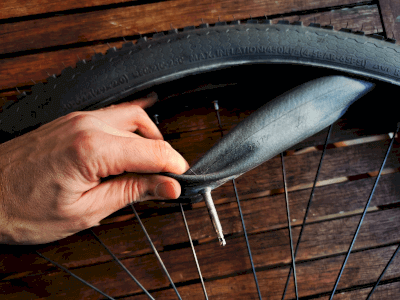What Is Butyl Rubber?

Butyl rubber is a type of synthetic rubber prepared by copolymerizing isobutylene and isoprene and is used in products around us. It was first developed by Standard Oil Company in the United States in 1937 using petroleum as the raw material. There are various types of butyl rubber depending on the addition of additives. The most suitable butyl rubber is produced according to the characteristics of the product to be used.
Uses of Butyl Rubber
Butyl rubber is used in a wide range of applications. Mainly in the automotive field, butyl rubber is used as raw material for tire tubes, hoses, and belts. Other industrial products include wire sheathing, rubber for window frames, and sports applications such as soccer balls and basketballs. Looking at product trends, butyl rubber is used in areas subject to high levels of tension, impact, and wear, and is particularly applied to products that require a certain level of strength.
Characteristics of Butyl Rubber
Butyl rubber is synthesized by copolymerizing isobutylene with isoprene. One particularly useful property of this rubber is its resistance to air permeation, which is about one-tenth that of natural rubber, styrene rubber, and butadiene rubber. This property of air permeability makes it an ideal raw material for tires, balls, and other products that require air to be stored inside the rubber and kept from leaking out through permeation. Butyl rubber also has excellent heat resistance, aging resistance, chemical resistance, acid/alkali resistance, and electrical insulation properties. It is used for the following purposes:
- Applications where heat resistance is expected: condenser packing, steam hose material.
- Applications where weather resistance and aging resistance are expected.
Waterproof materials for construction, sheets, and adhesives for waste disposal ponds. - Applications where chemical, acid, and alkali resistance is expected.
Rubber stoppers for pharmaceuticals, rubber gloves, rubber hoses, and industrial goods. - Applications expected to have electrical insulation properties:
Wire sheathing, insulating tape. - Applications where air permeability is expected:
Tires, sports balls
Butyl Rubber Disadvantages and Countermeasures
Butyl rubber is inferior to natural rubber in terms of elasticity, workability, and oil resistance, and its poor compatibility with other synthetic rubbers makes it difficult to develop rubber materials with new functions by mixing them. To solve these disadvantages, various types of butyl rubber have been synthesized by controlling the amount of isoprene during synthesis to change the degree of unsaturation, adjusting viscosity, and adding anti-aging agents.
About Halogenated Butyl Rubber
Butyl rubber has a slow vulcanization rate, is difficult to co-vulcanize with other highly unsaturated rubbers, and has poor adhesion to other rubbers and metals. To overcome these drawbacks, halogenated butyl rubber was developed by introducing chlorine and bromine atoms into the butyl rubber molecule. These halogenated butyl rubber contain highly reactive halogen molecules and double bonds in the molecule, and it has been reported that their vulcanization speed is faster and their vulcanization degree is greater than that of general butyl rubber.